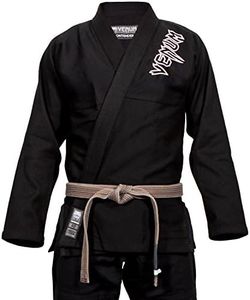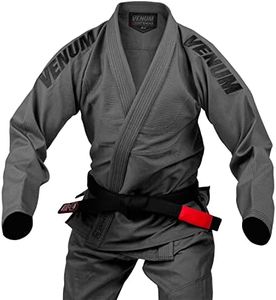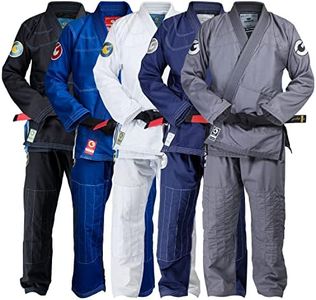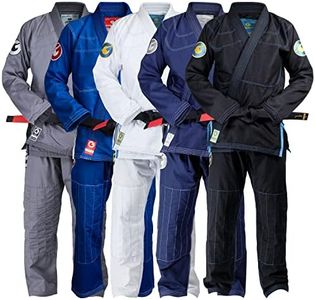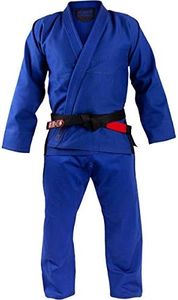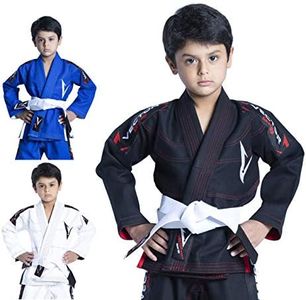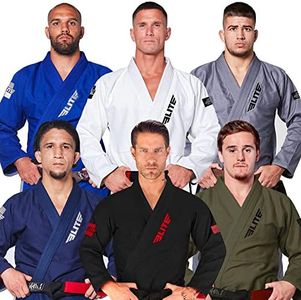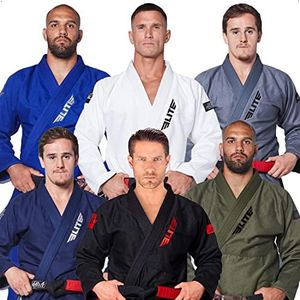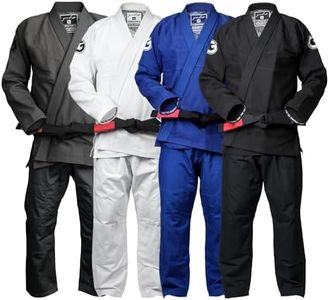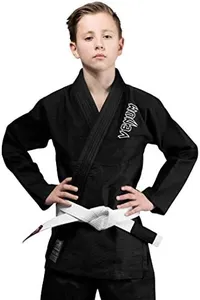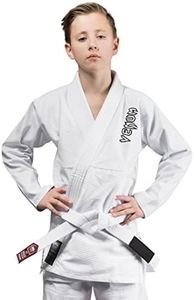We Use CookiesWe use cookies to enhance the security, performance,
functionality and for analytical and promotional activities. By continuing to browse this site you
are agreeing to our privacy policy
10 Best Bjj Gis
From leading brands and best sellers available on the web.Buying Guide for the Best Bjj Gis
Choosing the right BJJ gi is important because it directly affects your comfort, performance, and ability to train effectively. The gi is not just a uniform—it can influence your mobility, grip, and even your confidence on the mat. When selecting a gi, you should think about how often you'll use it, your training goals, your preferences for fit and appearance, and any competition requirements you might have. Familiarize yourself with the main features of a gi so you can match them to your needs and enjoy both training and progress.Material WeaveWeave refers to the way the fabric threads are interlaced to form the gi's jacket. It determines the durability, weight, and thickness of the gi. Common weaves are single, double, pearl, and gold. Single weave gis are lighter and cooler, suitable for hot climates and beginners; double weave gis are heavier and tougher, providing more resistance for advanced practitioners or those who train often. Pearl weave is a popular choice as it offers a good balance between strength and weight. If you want a light gi for comfort and easy movement, go for single or lightweight pearl weave, but if you need something lasting for heavy training, try double or gold weave choices.
Gi WeightGi weight is the overall heaviness of the uniform and affects both comfort and the feel during practice. Lighter gis are easier to move in and less physically demanding, making them good for lengthy training or travel. Heavier gis may last longer and offer some advantage in grips during competition. If you value freedom and minimal sweat, lighter gis are the way to go, but if you expect rough training or want something to withstand lots of use, a heavier gi may suit you better.
Fit and SizingFit relates to how the gi conforms to your body. A well-fitting gi should allow full range of motion without being overly baggy or restrictive. Sizes often run from A0 to A6, with each size calibrated for a range of heights and weights. Some gis are made in slim, regular, or husky cuts to accommodate different body types. If you are between sizes, check the brand’s sizing chart and consider shrinkage after washing. Choose a fit that feels snug but not tight, allowing you to move freely and comfortably during drills and sparring.
Reinforcement and QualityReinforcement refers to extra stitching or double layering in high-stress areas like the collar, knees, and underarms. This makes the gi more durable and less likely to tear. A high-quality gi often has reinforced stitching at stress points and thicker collars to withstand gripping. For frequent practitioners or those who roll hard, strong reinforcement is a must, while casual users might be fine with lighter reinforcement.
Collar ThicknessCollar thickness impacts both your comfort and your opponent’s grip. Thicker collars can make it harder for others to get a strong grip but may also feel bulkier around your neck. Thinner collars are lighter and sometimes more comfortable, especially for those new to the sport. If you compete a lot, a thicker collar is helpful for defense, but if you train mostly for fun and comfort, a medium or standard collar might work better.
IBJJF ApprovalThe International Brazilian Jiu-Jitsu Federation (IBJJF) sets specific rules about gi design and color for competitions. An IBJJF-approved gi meets these guidelines and is necessary if you plan to compete in official tournaments. If you’re training just for recreation, this isn’t essential, but if you plan to enter competitions, look for gis marked as IBJJF compliant.
ShrinkageAlmost all cotton gis will shrink somewhat after washing, but the amount varies depending on fabric type and weave. Preshrunk gis will change size less, while untreated cotton will shrink more. If you want your gi to remain close to the size you buy, look for preshrunk options and follow the care instructions. Always plan for a little bit of shrinkage when picking your size to make sure the fit stays comfortable.
Design and ColorWhile aesthetics don't impact performance, design and color can make you feel more confident or happy when you train. Common gi colors are white, blue, and black, as these are generally accepted in most gyms and competitions. If you’re new to BJJ or plan to compete, sticking with traditional colors is safest. For personal style, patterns and accent colors are available, as long as your academy allows them.
